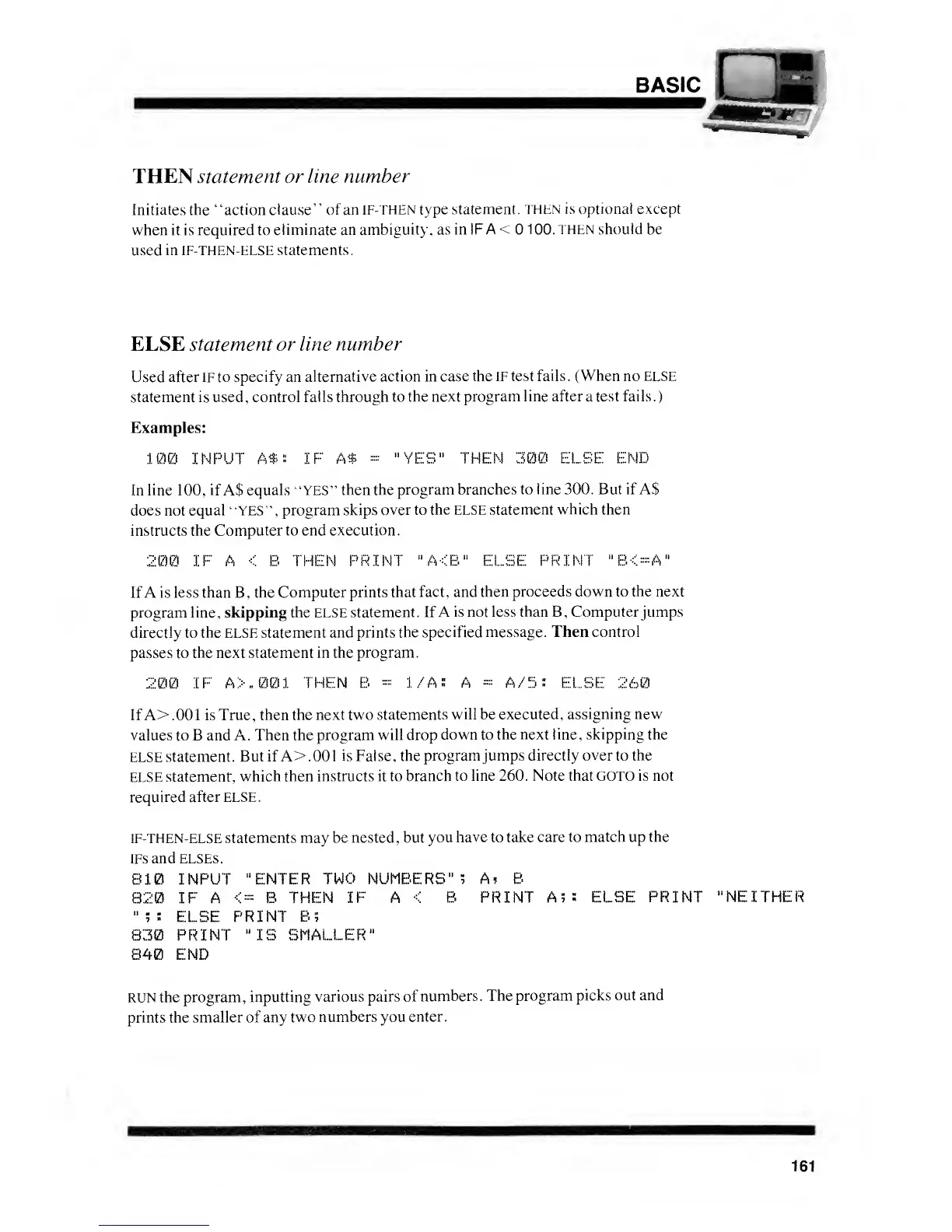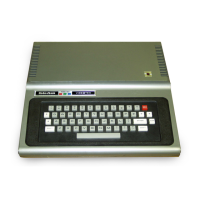BASIC
THEN statement
or line
number
Initiates the
"action clause" of an
IF-THEN type statement.
THEN is optional except
when it is required to
eliminate an ambiguity,
as in IF A
<
1 00.
THEN should
be
used
in IF-THEN-ELSE statements.
ELSE statement or line
number
Used
after IF to specify an
alternative action in case
the IF test
fails
.
(When no
ELSE
statement is used , control
falls
through
to the next
program line after
a
test fails.
)
Examples:
100 INPUT A*: IF A*
=
"YES" THEN 30© ELBE
END
In
line
100,
if
A$
equals "YES" then the
program branches
to line 300. But if
A$
does not
equal ' 'YES
'
' ,
program skips
over to the ELSE
statement which then
instructs the
Computer to end execution.
200
IF A < B THEN
PRINT "A<B" ELSE PRINT
"BOA"
If A is less than B, the
Computer prints that
fact, and then
proceeds down to the next
program line, skipping the ELSE
statement. If A
is not less than B
,
Computer jumps
directly to the ELSE statement and
prints the
specified message. Then control
passes
to
the next statement in the
program.
200 IF A>„00i
THEN B
=:
1/A-" A
=
A/5: ELSE
260
If A>.001 is True, then the
next two
statements will be executed,
assigning new
values to B and A. Then the
program will drop
down to the
next line, skipping
the
ELSE
statement.
But if A>
.001 is False, the
program jumps directly
over
to the
ELSE statement,
which then
instructs it to
branch to line 260. Note that GOTO is not
required
after ELSE.
IF-THEN-ELSE
statements
may
be nested, but
you
have
to take
care to match up the
IFsandELSEs.
810 INPUT
"ENTER
TWO
NUMBERS"?
A, B
820 IF
A
<=
B
THEN IF A <
B PRINT A;: ELSE
PRINT
"NEITHER
"
?
: ELSE
PRINT B?
830 P R I NT " I S
SMALLE
R
"
840 END
RUN the
program, inputting
various pairs of
numbers. The
program picks
out and
prints the
smaller of any
two numbers you
enter.
161

